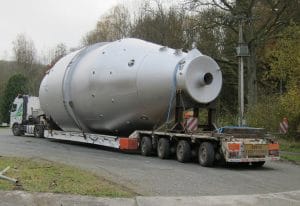Drying
TGE realizes installation of your drying tower in differents configurations.
CLASSIC TOWER
Of simple design, a classic drying facility consists of an upstream air treatment (filtration, dehumidification if needed, heating), a drying chamber and a dedusting system.
TGE implements efficient drying air dedusting technologies, allowing you to meet to environmental standards.
Equipped with a centrifugal atomizer and/or spraying nozzle baskets, classic towers are simpler to operate but do not offer the features of multiple effects towers, in particular in terms of the density control and obtained powder grain size.
TGE optimizes drying facilities energy performances, in order to reduce production costs.
TGE offers automated supervision tools that allow a full control on the process and the securisation of the equipment.
Hygiene and cleanability issues are permanently at the heart of our designing teams’ concern.
TGE will be able to apply its expertise and its responsiveness to meet your needs in accordance with the complexity of implementation, performance and deadline constraints.
BUILT-IN PACKED BED TOWER AND FLUIDIZED BED
Multi-stage drying allows a better control of humidity and final temperature of the produced powder, as well as a controlled granulation of the powder.
One refers to 2 drying stages when the facility has a drying chamber without a static bed and a fluidized bed, and 3 drying stages when the chamber includes a static bed.
 4 configurations
4 configurations
1) Dedusting
TGE offers different technologies to ensure dedusting of drying air loaded with fine powders :
- Bag filters :
TGE designs its custom bag filters according to your implementation, hygiene, and maintenance constraints. Fine particles are separated from process air by filtering bags. Fine particles are collected at the bottom of the bag filter to be stored or recycled in the process.
TGE uses filtration materials at the forefront of current technology to achieve an advanced level of filtration, all the while offering the possibility of doing cleaning in place.
– Advantages: high filtration level, possibility of energy recovery on dedusted air, lower pressure loss compared to cyclones, possible recycling of fine particles.
– Disadvantages: higher investment level, regular replacement of the bag filters (1-2 times per year on average), compressed air consumption for unclogging.
- Gas scrubber :
Water droplets are sprayed into a restricted flow section. The speed of the air loaded with fine particles allows trapping the fine particles in the droplets.
– Advantage: lower fines rejection rate compared to cyclones
– Disadvantages: Risk of product contamination by recirculation water, significant pressure loss.
- Cyclonic separators :
Fine particles are separated from the air by centrifugal force. A cyclone’s design is adapted to a given airflow.
– Advantages: limited investment cost, limited maintenance, possibility of returning collected particles in the process, simple cleaning.
– Disadvantages: limited effectiveness, reduced optimal operating range.
These different technologies can be combined to improve global performance.
2) Heating of the concentrate
TGE designs heating units adapted to the products characteristics (viscosity, sensitivity to denaturation).
The “vacuum” or hot water heater technologies are suitable for multiple applications.
TGE offers heating solutions that optimize energy consumption through energy recovery systems.
3) Atomization
TGE offers centrifugal atomizers as well as nozzle systems for its drying towers.
The technological choice is made mainly according to the desired powders’ characteristics.
4) Energy recovery
TGE is sensitive to energy consumption issues. In order to reduce consumption of drying facilities that are by nature very energy-intensive, TGE implements for example energy recovery systems on the downstream air that allow heating the upstream air.
This reduces the need for primary energy from fossil fuels by over 15%. Decarbonization depends above all on reducing energy consumption !


